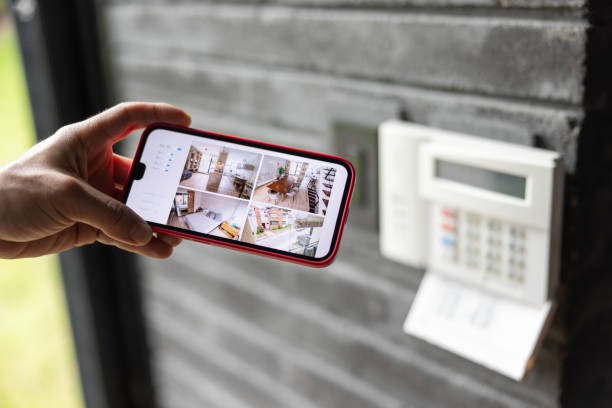What Skills Do Acupuncture Students Learn?
The ancient practice of acupuncture, a cornerstone of Traditional Chinese Medicine, has been healing and rejuvenating people for thousands of years. Modern students of this venerable art aim to carry this legacy forward. As they enter the realm of healing, they acquire a diverse skill set that goes far beyond inserting needles. Here’s what an aspiring acupuncture practitioner learns during their educational journey.
Learnings of Acupuncture Students
1. Fundamental Theories of Traditional Chinese Medicine
Acupuncture students begin their education by delving into the fundamental theories that frame Traditional Chinese Medicine (TCM). They gain insight into the concept of Qi, the life force that flows through the body, and learn about critical complementary forces in the body, Yin and Yang.
Understanding the Five Elements theory and the Zang Fu organ system is essential for comprehending the interconnected nature of the human body and the universe in TCM. These principles provide a foundation for diagnosing and treating patients holistically.
2. Diagnostic Skills
-
Observation: Students are trained to keenly observe patients, focusing on details such as the color and texture of the skin, facial expressions, and overall posture. These observations provide valuable insights into the patient’s internal balance and potential imbalances that may manifest physically.
-
Listening and Smelling: TCM places importance on listening to the quality of a patient’s voice and breath. Practitioners are attuned to detect nuances in vocal tones and breath sounds, as well as any peculiar body or breath odors. This sensory information aids in identifying patterns of disharmony within the body.
-
Asking: Practitioners develop the skill of asking relevant questions to understand a patient’s history and symptoms comprehensively. This process involves delving into various aspects of the patient’s life, including lifestyle, dietary habits, and emotional well-being. The information gathered helps in forming a holistic understanding of the patient’s health.
-
Palpation: Palpation is a crucial diagnostic tool in TCM, involving the examination of the body through touch. Students learn to palpate specific areas, with a focus on assessing the pulse and abdomen. Pulse palpation, in particular, is a highly refined skill in TCM, providing detailed information about the state of different organ systems and the flow of Qi.
3. Acupuncture Techniques
Acupuncture involves much more than needle insertion. Students practice a multitude of needling techniques, learning the correct angles, depths, and methods to stimulate each acupuncture point effectively.
4. Adjunct Therapies
In addition to needling, students learn adjunct therapies like Moxibustion, Cupping, Electro-acupuncture, and Tui Na massage. These therapies complement acupuncture, enhance the healing process, and offer additional tools for patient care.
5. Herbal Medicine
An acupuncture student’s curriculum often includes a deep dive into Chinese herbal medicine. They learn to identify, prescribe, and combine different herbs to create formulas tailored to individual patient needs.
6. Western Medical Knowledge
As acupuncture is increasingly integrated into mainstream healthcare, students must understand basic Western medical sciences. Anatomy, physiology, pathology, and pharmacology are essential subjects that help bridge the gap between Eastern and Western approaches to health.
7. Communication Skills
Effective communication is paramount in any healthcare setting. Students learn to explain treatment protocols clearly, manage patient expectations, and build rapport to ease any anxieties about the treatment. Moreover, they are taught to record patient details accurately and maintain professionalism throughout.
8. Ethics and Practice Management
Learning the ethical practice of acupuncture, including privacy laws and patient consent, is critical. Students are also trained in the business aspects of running a clinic, from managing bookings to understanding healthcare systems and insurance.
Diving Deep Into Practical Experience
1. Hands-on Training
Nothing beats real-life practice. Acupuncture students spend hundreds of hours in supervised clinical settings, honing their skills and applying their theoretical knowledge to treat actual patients.
2. Collaborative Learning in a Student Clinic
Within the safe environment of a student clinic, future practitioners learn teamwork and collaborative healthcare practices. These student clinics often offer services to the public, allowing learners to interact with a diverse patient population. Those interested in the day-to-day operations of such clinics and the experiences of trainee acupuncturists can read more on educational websites or reach out to schools offering these programs.
Certification and Advancing in Acupuncture
Upon completing their coursework, acupuncture students often pursue certification in their respective regions, which includes passing rigorous board exams. These qualifications serve as a testament to their skills and dedication to the profession.
Earning a diploma in acupuncture is a significant milestone for students. Some educational institutions now offer a blended delivery acupuncture diploma program, combining online theoretical instruction with in-person practical training, addressing today’s need for flexible learning models.
The Evolution of Traditional Chinese Medicine Education
As holistic approaches to health continue to gain popularity, traditional Chinese medicine education evolves to meet contemporary needs. Educational institutions are incorporating cutting-edge learning tools, scientific research, and cross-disciplinary studies to provide the most comprehensive and robust training for acupuncture students.
Conclusion
Acupuncture students embark on a journey that is rich in history and bursting with future possibilities. As they weave their way through extensive learning and practice, they prepare to join a community of healers committed to bettering the lives of their patients.
From understanding intricate TCM theories to mastering needle placement and developing compassionate communication, their skillset is both comprehensive and profoundly healing. As the world increasingly seeks out alternative forms of healthcare, trained acupuncturists will be at the forefront, ready to offer their carefully cultivated expertise.



